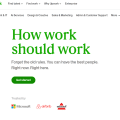Launching a second product feels like growth, but behind the scenes, money might already be leaking.
Multi-platform SaaS platforms open up new revenue streams, sure. But they also create financial blind spots that make budgeting harder and profits fuzzier. Shared infrastructure, bundled pricing, and mixed customer segments can distort key metrics like CAC, LTV, and churn.
If you’re not tracking each product like its own business, you’re guessing, not managing.
In this article, we’ll break down what SaaS founders need to know about balancing budgets, costs, and forces across a growing product portfolio. This way, they can make better decisions with clearer data and stop profit from slipping through the cracks.
Table of Contents
The Financial Complexity of Multi-Product SaaS

Adding more products sounds like a simple path to growth, but financially, it is anything but simple.
Each product you launch comes with its own set of costs, pricing, adoption patterns, and customer needs. And when everything is bundled into one general ledger, it gets hard to see what’s working and what’s not.
Let’s break down two major financial challenges multi-product SaaS companies face:
More Products, More Variables
When you offer multiple products, you’re juggling different pricing models, go-to-market strategies, and sales cycles. Product A might be a self-serve tool with monthly billing, while Product B is enterprise-only with custom contracts and annual renewals.
Each of these products pulls different resources — from sales to support to engineering. But if you’re not tracking costs separately. You won’t know which product is actually driving profit or draining budget.
Take Hubspot, for example. Its CRM is free. However, its Marketing Hub and Sales Hub generate most of the revenue. Without tracking product-level metrics, it would be tough to know where to invest or cut back.
Metrics Must Be Product-Specific
CAC, LTV, churn, gross margin — these numbers tell a clear story. But that story gets distorted when you’re looking at them in aggregate across multiple products.
Let’s say Product A has high churn but low CAC, and Product B has sticky customers but takes more to acquire. If you’re only looking at the average, you might kill off the wrong features or double down on a product that’s bleeding margin.
For SaaS founders just getting serious about financial tracking, choosing the right accounting software is key. Resources like a guide by Small Business HQ help simplify that first decision — and set you up to track product-level performance more effectively from the start.
Budgeting and Cost Allocation Strategies
Once you have multiple products in play, your budget can’t just be one big pot. You need to know what each product costs to build, sell, and support — and whether the return justifies the spend.
Here’s how smart SaaS teams approach budgeting when the business moves beyond one product:
Create Product-Level Budgets
Instead of setting a company-wide marketing or R&D budget, break it down by product. Assign each one its own goals, spend limits, and expected revenue contribution.
This helps you spot where you’re over-investing or underfunding. This is especially useful if one product is subsidizing another without a clear growth case.
Use Cost Centers or Activity-Based Costing
Multi-product companies share a lot: engineering resources, cloud infrastructure, customer support teams. But not all products use these resources equally.
That’s why finance teams often rely on cost centers or activity-based costing (ABC). These methods help allocate shared costs based on actual usage or effort, not just gut feel.
Tools like Younium, an AI-powered subscription management and billing solution for B2B SaaS, make this easier. They help track product-specific revenue and automate allocation across multiple product lines — a big win for visibility and control.
Understand Unit Economic Per Product
Each product has its own CAC, LTV, and payback period. Treating them the same is a shortcut to bad decisions.
For example, a freemium add-on might show high acquisition numbers but very low LTV. Another product might take longer to close, but bring in enterprise contracts and long-term value.
If you’re unsure what tools can support this level of financial tracking, a good place to start is to review this post on Attrock. It breaks down platforms that help SaaS companies track and report revenue across products — and choose one that fits their stage and complexity.
Final Thoughts
Multi-product growth can unlock major wins for SaaS companies: stronger retention, bigger contracts, more upsell potential. But without financial discipline, it also opens the door to waste and confusion.
As your product suite expands, your budget strategy needs to evolve. That means tracking costs, revenue, and performance at the product level — not just the business as a whole.
The good news? You don’t need a massive finance team to get this right. With the right tools, metrics, and structure, even lean teams can build financial systems that scale alongside their product roadmap.
The goal isn’t just growth. It is growth you can actually measure and manage.
























